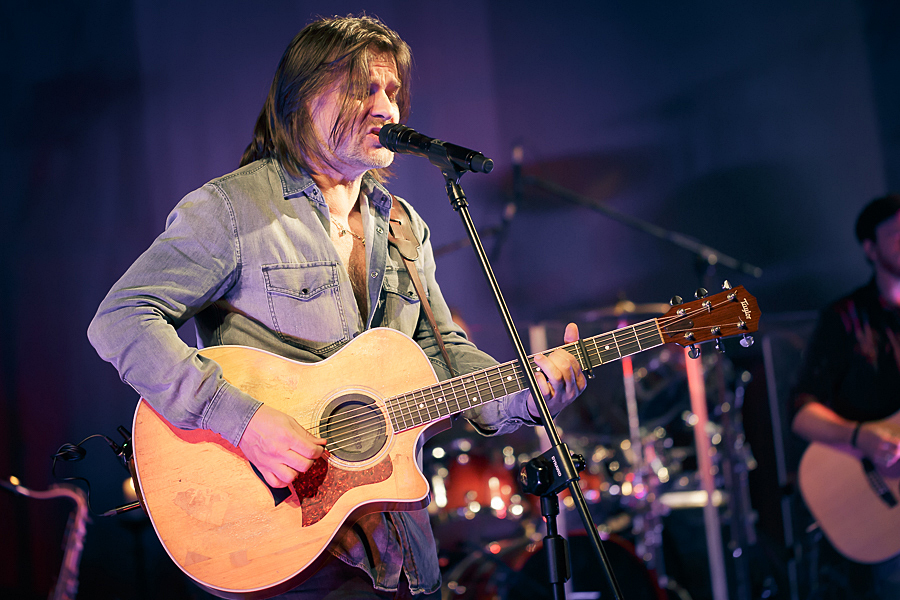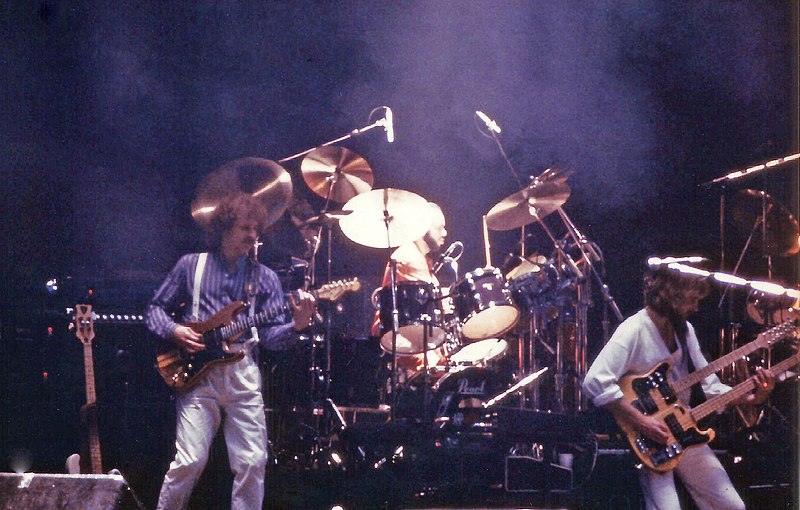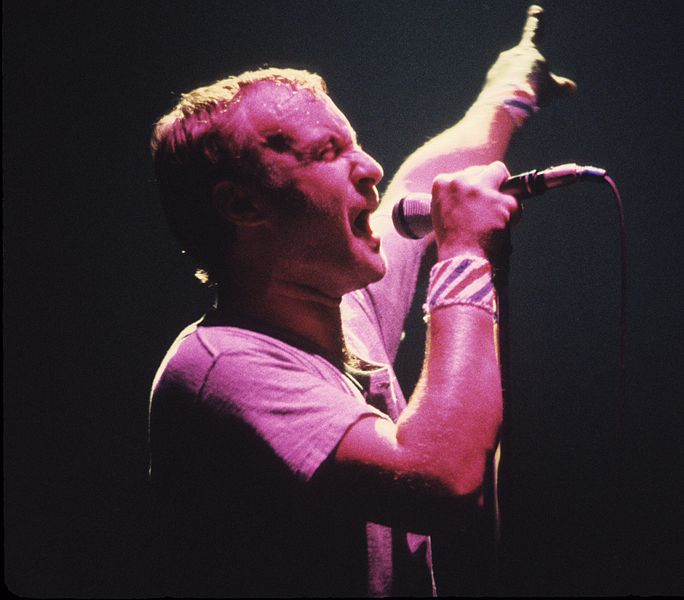On 11 June 2007, Genesis started their ‘Turn It On Again’ reunion tour in Helsinki. It saw the return of Phil Collins on vocals.
Genesis announced their reunion in 2006
On 7 November 2006, Tony Banks, Mike Rutherford and Phil Collins announced that they were reuniting as Genesis to play a series of shows in Europe in the summer of 2007 and in North America in autumn. Phil Collins had left Genesis in 1996. Although he had appeared with his former band members in the past, this was his official return. The reunion also included Genesis’ long-time live members Chester Thompson on drums and Daryl Stuermer on guitar. Both had not played with the band since 1992.
The first proper gig was planned for 11 June 2007 in Helsinki. With no new album to promote, the band had enough time to go through their material and dust off the old songs. Having not played together for 15 years, rehearsals were a bit more difficult than they all had expected.
Rehearsals for the ‘Turn It On Again’ tour
Tony Banks (keyboards) and Mike Rutherford (guitars, bass) not only had to relearn the songs. They also had to change keys so that Phil Collins, whose voice had dropped over the years, could sing the songs.
He had some trouble relearning some of lyrics. But once he did, he struggled less with them than he had in the past. Songs like ‘Domino’ and ‘Home By The Sea’ with lyrics by Tony Banks were always a challenge for him to sing. (For example lines like ‘Sheets of double glazing’ or ‘Nylon sheets and blankets’). He also listened to live recordings from the past and realized that he had often added some little extras. On this tour he went back to singing the songs the way they were written.
He also had not played Genesis songs on drums for years. On his solo tours, he had done the drum duet with Chester Thompson and played on ‘In The Air Tonight’. But now he had to get himself back in shape and play things like ‘Second Home By The Sea’. Luckily enough, Chester Thompson and Daryl Stuermer were there to back them up and help them out. Daryl had to show them how to play their own songs because he knew and had learned them so well.
But the five of them had played for so long that even after a break of 15 years, the chemistry was still there. Also, they got along much better than ever before. Tony Banks and Mike Rutherford had become looser with age whereas Phil Collins had become a bit more serious. They could talk about things they never dared say to each other 15 years before.
The setlist
And what would Genesis play on this reunion tour? They had plenty of material to choose from. Of course, there some inevitable hits that the fans wanted to hear like ‘Follow You Follow Me’, ‘Invisible Touch’, ‘Mama’ and ‘I Can’t Dance’.
They also played their hit ‘Land Of Confusion’ a bit heavier than usual. It sounded more modern, which was a nod into the direction of the band Disturbed. They had done a metal cover version of the song.
A trip down memory lane on the Genesis reunion tour
Apart from the hits, they also played more ambitious songs from their later period like the already mentioned ‘Home By The Sea’ and ‘Domino’, two of Tony Banks’s favourites. As opener, they decided to do the instrumental intro of ‘Behind The Lines’ from Duke. They added a piece of ‘Duke’s End’ and called the show opener ‘Duke’s Intro’. It was a very strong and powerful opening for the reunion shows and would always make the crowd go wild.
Overall, Phil Collins played much more drums throughout the show than he had in the past. And for ‘I Know What I Like’ he looked at the tambourine dance from 1976 and after a bit of training, was able to do it also on this tour.
Also, they dug out ‘Ripples’ from A Trick Of The Tail (the first album with Phil Collins as lead vocalist from 1976), which they had not played for years. It was a real surprise in the setlist. The same goes for a bit of ‘Duke’s Travels’ that was incorporated into a medley. The setlist was a great mixture of material from all of their history. They played songs from almost every album since 1973. The last song of the set was the Lamb-classic ‘Carpet Crawlers’ from 1974. It was always a very emotional ending for the band and the audiences.
Behind the scenes
The stage set-up for the tour came from acclaimed stage designer Mark Fisher, the lighting design came from Patrick Woodroffe. Behind the band was a huge screen which created a different look and a different setting for each song.
Producer Nick Davis supervised the sound of the band. Also, the band decided to release sound board recordings of each show through an Encore Series.
The first concert in Helsinki
And finally the first gig was played in Helsinki on a warm summer night. The band played flawlessly, the screens showed the right visuals at the right time and the audiences were happy to see Genesis again.
Phil Collins later said that some people expected them to release a new album during this period. But for him, the tour was not only a Genesis reunion tour but also a Genesis farewell tour.
The tour went on until autumn 2007 when the band played North America. After that, it seemed that Genesis had closed the final chapter. When asked what they enjoyed most about the reunion tour, they all agreed that the greatest thing was to be back with old friends and laugh together.
Photo: Genesis, ofwel: Phil Collins, Michael Rutherford, Tony Banks, Chester Thompson en Daryl Stuermer.}} |Source=Maikel Koek, via Wikiportrait |Date= |Author=Maikel Koek |Permission={{Wikiportrait|2008041010026495}} (https://creativecommons.org/licenses/by/3.0).






















